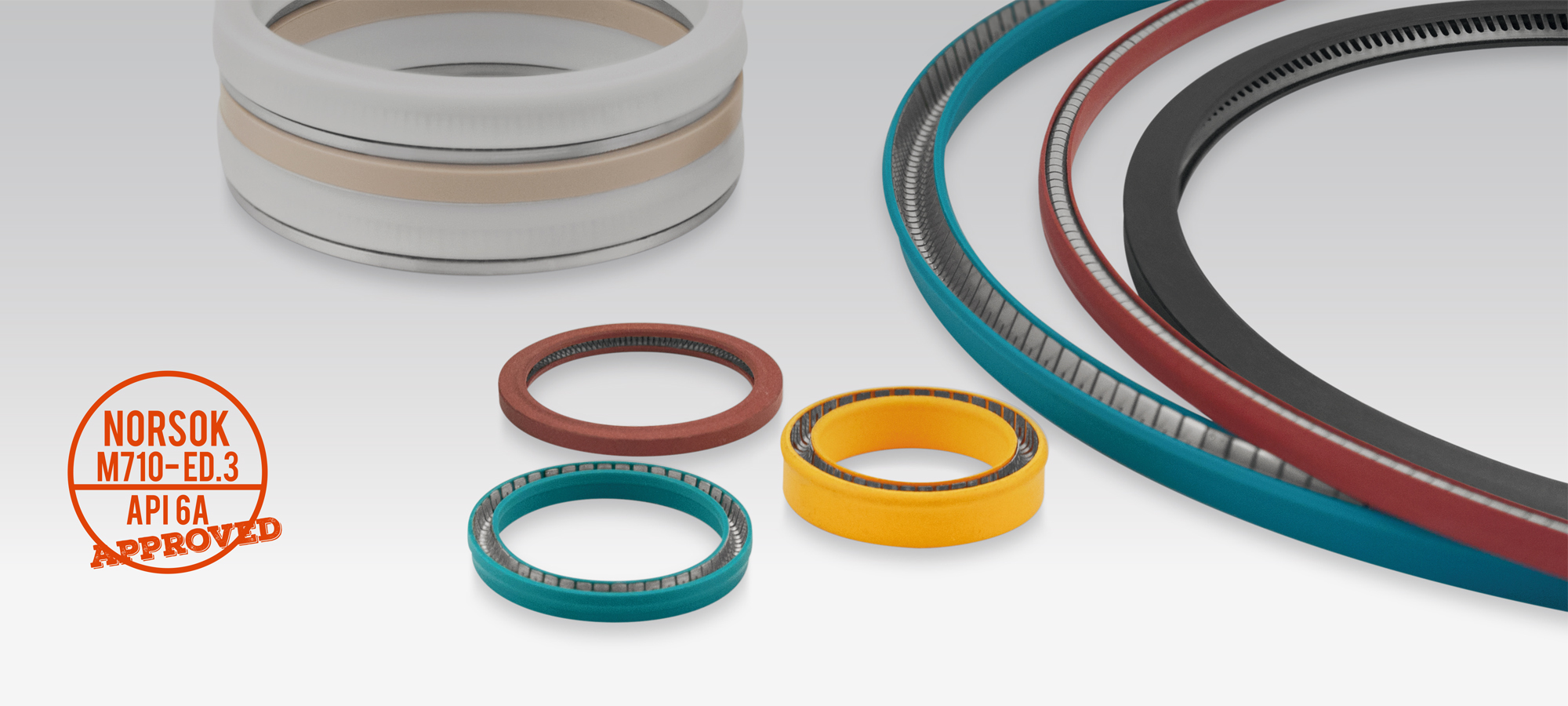
SPRING ENERGIZED SEALS – SES
Spring Energized Seals - SES - are made from high performance polymers. These include pure F10PTFE and filled F10PTFE, 3M™ Dyneon™ TFM™ modified PTFE and other high performance polymers - F10HPP.
The energized seals are precision components machined with latest generation CNC machines: the diameters and radial section are critical characteristics for seals. The typical “U” shape of the seal expands under system pressure, increasing the surface load, which ensures the seal is tight.
The metal springs located inside the seals create the initial thrust needed to activate the sealing mechanism. Fluorten offers a wide range of solutions, standard and non-standard, each optimized to manage the most critical applications.
The correct choice of materials and spring characteristics is an extremely important step, especially in the most demanding working conditions where the correct spring thrust must be evaluated with care. Some applications require very low thrust springs while others require high loads.
The spring energized seals - SES - produced by Fluorten are designed to operate from cryogenic temperatures of -270 °C to high temperatures, even over 300 °C. Special designs are able to withstand extreme combinations of HTHP (high temperature - high pressure).
Our spring energized seals - SES - are available in both radial and frontal versions, as both static and dynamic seals. There are sizes available to cover all possible combinations, from diameters of a few millimetres up to 2 metres. For low friction applications, both the seal design and the choice of spring are very important. Fluorten's spring energized seals - SES - are inert to all chemicals except molten alkali metals, high temperature fluorine gases and chlorine trifluoride. The materials available range from stainless steel, such as 1.4301, to high alloys such as Elgiloy®, Hastelloy® and Inconel 718.
F10-XX Materials compliant with Norsok M-710 ED.3 and API 6A standards are available on request.